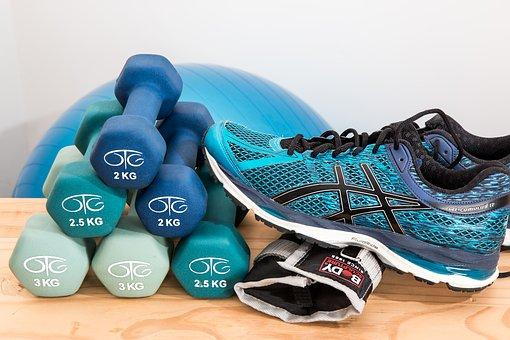
The Best Type of Exercise
As the saying goes, any exercise is better than none. However, if you want the best bang for your buck, high-intensity interval training is the way to go. Best thing about it? Anybody can do it.
One of the most common exercise excuses is not having enough time to do it. With high-intensity interval training, you literally only need a couple dozen minutes per week.
As it turns out, intensity of exercise, not duration, is the most important factor. Spending hours a day in the gym just isn't necessary and for many, can downright impede progress.
"Twenty-five young healthy sedentary or recreationally active men were recruited to participate in this study, with none engaged in a structured endurance training program. Subjects were randomly allocated to one of two parts of the study. Sixteen subjects (mean ± SD: 21 ± 2 y; 82 ± 17 kg; 1.83 ± 0.08 m; BMI: 23.7 ± 3.1 kg·m-2; VO2max: 48 ± 9 ml·kg-1·min-1) were allocated to the main part of the study, and completed the full experimental procedures. The remaining nine subjects (mean ± SD: 23 ± 8 y; 73 ± 9 kg; 1.78 ± 0.09 m; 23.0 ± 1.4 kg·m-2; VO2max: 47 ± 11 ml·kg-1·min-1) took part in a separate experiment to determine intra-individual variation in response to an oral glucose tolerance test, and did not perform HIT. There were no significant differences in the age, height, weight, BMI or VO2max between the two groups of subjects. Subjects were informed of the experimental protocol both verbally and in writing before giving informed consent. Furthermore, all subjects were informed about how potential life-style changes could affect the results of the study, and were requested to maintain their normal diet and levels of physical activity (apart from the training program) throughout the duration of the study. The study protocol was approved by the institutional Ethics Committee and conducted in accordance with the Helsinki Declaration."
Benefits of High-Intensity Interval Training include:
- increased insulin sensitivity
- lower resting heart rate
- decreased fat mass
- increased growth hormone
- lower blood pressure
- decreased VLDL
- decreased triglycerides
- decreased blood sugar
"Subjects refrained from performing any strenuous physical activity for 2 days prior to the OGTT, and attended the laboratory having fasted overnight. Venous blood samples were collected by venepuncture before, and 60, 90 and 120 min after ingestion of 75 g glucose (Fisher Scientific, Loughborough, UK) dissolved in 100 ml of water. Plasma was separated by centrifugation (10 min at 1600 g) and stored at -20°C until analysis of glucose, insulin and NEFA concentrations. Plasma glucose concentrations were measured using an automatic analyzer (YSI Stat2300, Yellow Spring Instruments, Yellow Spring, OH) and plasma insulin concentrations were determined by ELISA (Invitrogen, UK). Plasma insulin was measured only for samples taken at 0, 60, and 90 min. Plasma NEFA concentrations were determined by a colorimetric assay (Wako Chemicals, Germany) using a modified protocol. Briefly, 3.75 μl of plasma samples and standards of known concentration were pipetted into a 96-well plate. 75 μl of colour reagent A was added to each well and incubated at 37°C for 10 min. 150 μl of colour reagent B was added and incubated for a further 10 min at 37°C. The plate was then removed from the incubator and allowed to cool to room temperature prior to the absorbance being read at 550 nm. Coefficients of variation (CV) for duplicate samples were 3% for glucose, 5% for insulin, and 8% for NEFAs."
High-intensity Interval Training sample plan:
- choose an exercise, preferably something that requires resistance
- perform exercise as hard and fast as *you* can do it for 20-30 seconds
- rest for 90 seconds
- repeat 5 rounds
**note: judging intensity can be done several ways. Checking your heart rate during exercise is probably one of the best ways to measure intensity.
Maximal heart rate is measured:
220 minus your age. In other words, if you're 60 years old, your maximal heart rate wold be 160. That is your maximal heart rate. This will vary person to person based on fitness level. You should always consult with your physician.
" The efficacy of a high intensity exercise protocol, involving only ~250 kcal of work each week, to substantially improve insulin action in young sedentary subjects is remarkable. This novel time-efficient training paradigm can be used as a strategy to reduce metabolic risk factors in young and middle aged sedentary populations who otherwise would not adhere to time consuming traditional aerobic exercise regimes."
For help with personal fitness goals and customized programs to suit your needs contact us www.greinerhealthsolutions.com
